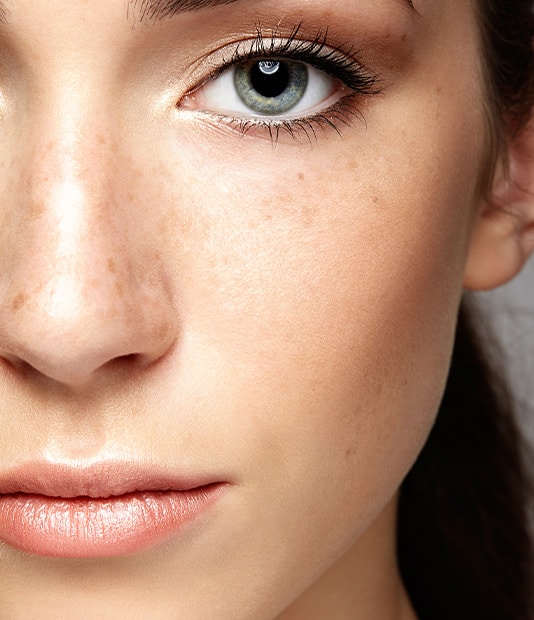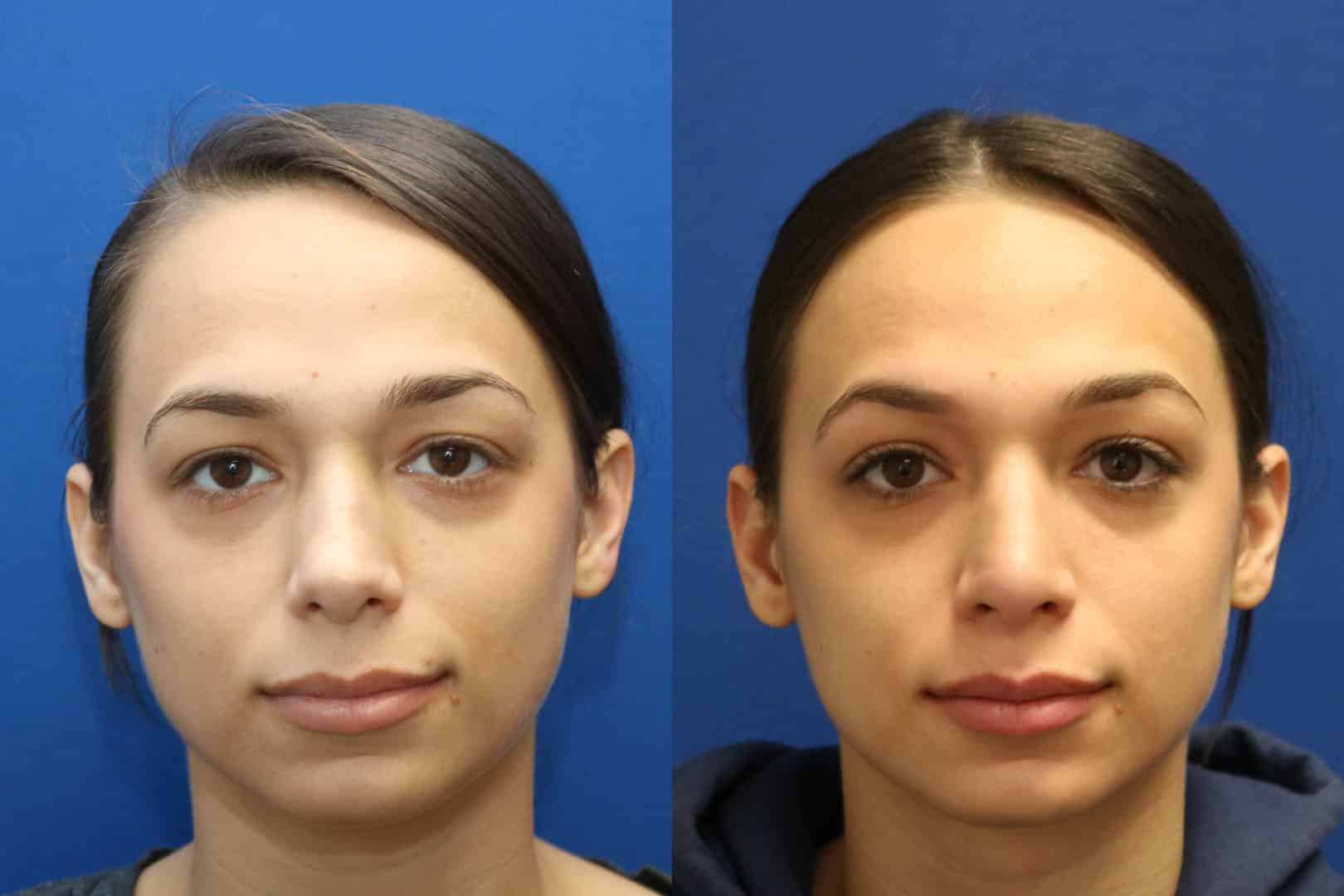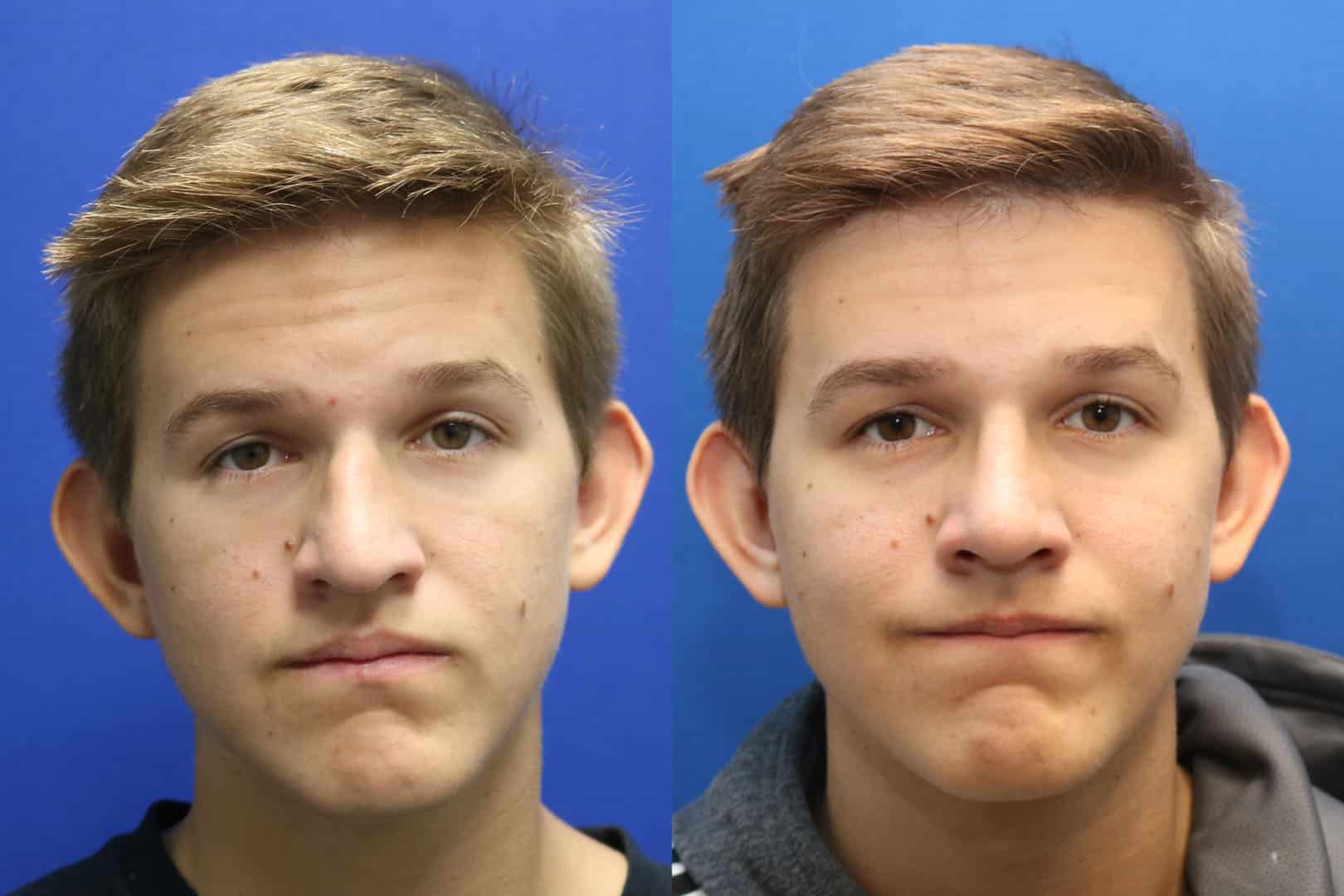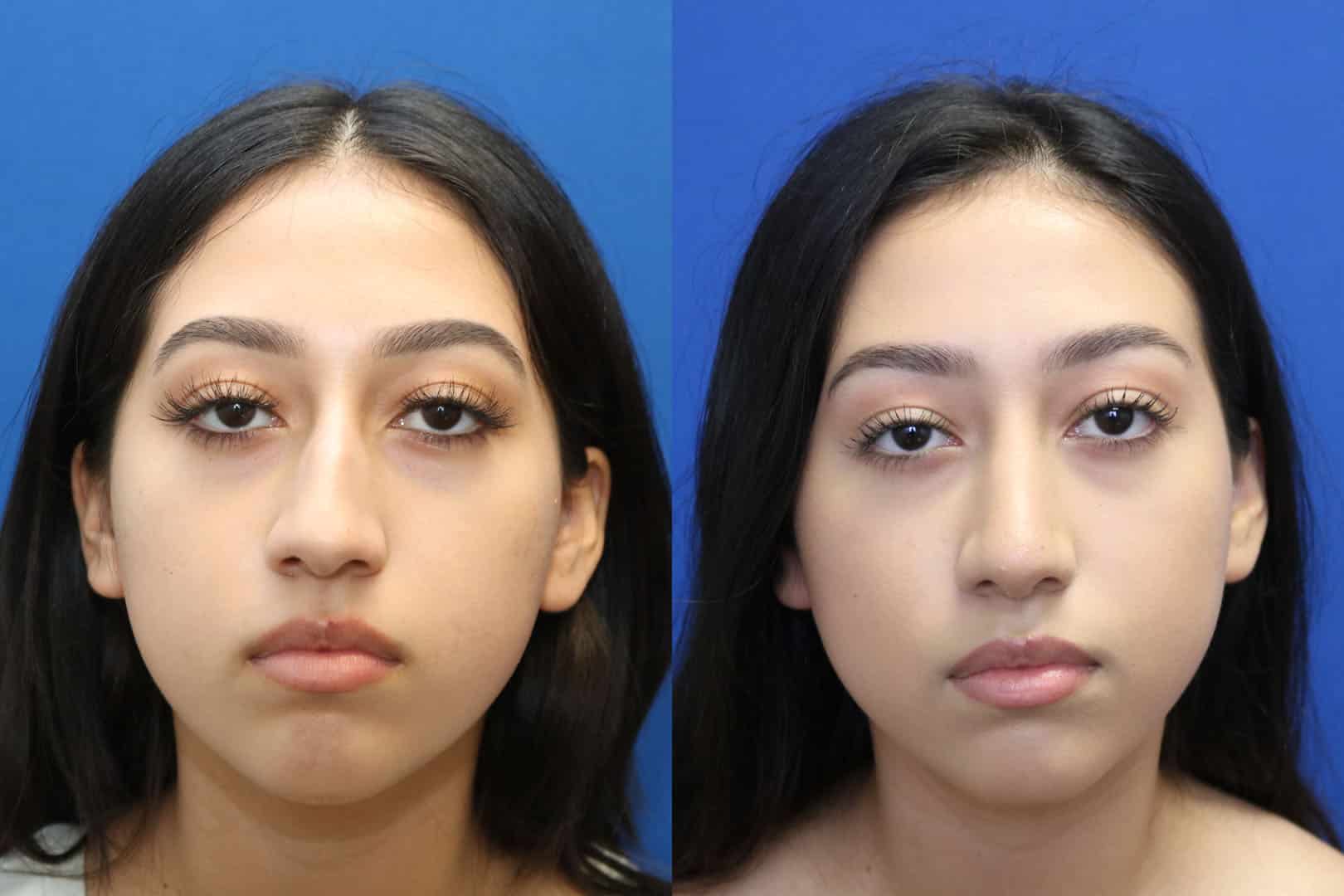While rhinoplasties are among the most popular cosmetic surgery options, an unfortunate number of patients do not achieve the results they are looking for. Whether unexpected complications have occurred or an inexperienced surgeon performed the procedure, patients may be left with poor cosmetic results or even difficulty breathing due to structural issues. When this occurs, patients can turn to Dr. Christian Paquet for a revision rhinoplasty.

While rhinoplasties are among the most popular cosmetic surgery options, an unfortunate number of patients do not achieve the results they are looking for. Whether unexpected complications have occurred or an inexperienced surgeon performed the procedure, patients may be left with poor cosmetic results or even difficulty breathing due to structural issues. When this occurs, patients can turn to Dr. Christian Paquet for revision rhinoplasty.
What is a Revision Rhinoplasty?
A revision rhinoplasty is any secondary rhinoplasty or subsequent plastic surgery procedure performed to improve results or correct complications that arose from a previous surgery. When considering this surgical procedure, it’s essential to choose a highly qualified facial plastic surgeon or rhinoplasty surgeon with expertise in advanced techniques, as revision cases require a deeper understanding of nasal anatomy and structural challenges. Factors such as damage to the nasal septum, weakened septal cartilage, or issues affecting nasal breathing often make this procedure more complex than a primary rhinoplasty. Each revision rhinoplasty patient requires an individualized approach to restore both function and aesthetics while preserving the natural harmony of the face.
Who is a Candidate for Revision Rhinoplasty?
Many patients who are unsatisfied with the results of their initial rhinoplasty or who face complications from their results are candidates for a revision procedure. During a consultation, Dr. Paquet will examine your nose to determine what is to blame for your poor results and develop a plan for a revision procedure. He will also ask questions about your health history and your expectations for the procedure. Keep in mind that your potential results may be limited depending on the state of the tissues within your nose, and the challenges that may arise due to your initial surgery.
Benefits of Revision Rhinoplasty
There are countless benefits to having a revision rhinoplasty. Some of the benefits you can look forward to include the following:
- Improves Nasal Function: Corrects breathing issues caused by a prior rhinoplasty, such as obstructed airways or deviated septum problems.
- Enhances Aesthetic Appearance: Addresses cosmetic concerns like asymmetry, unwanted humps, or disproportional changes from the initial surgery. Revision rhinoplasty is meant to ensure you’re happy with your results.
- Restores Confidence: Helps patients feel more confident in their appearance by delivering results closer to their original expectations.
- Corrects Scarring or Irregularities: Fixes scar tissue, cartilage irregularities, or poorly healed areas from the initial procedure.
Types of Revision Procedures
There are a number of different types of revision rhinoplasty, including structural aesthetic, function, and open and closed.
Structural
A structural revision rhinoplasty works to correct structural issues from the original surgery. This can include uneven cartilage or a collapsed nasal passage. If you were left with structural difficulties after your initial surgery, this is likely the type of revision rhinoplasty you require.
Aesthetic
Not happy with the look of your nose after your first surgery? An aesthetic revision rhinoplasty is likely the solution for you. This type of revision surgery focuses on improving cosmetic concerns like fixing asymmetry, reshaping the nasal tip, and smoothing out any humps.
Functional
If you have problems breathing after your first surgery, a functional revision rhinoplasty is likely the type of procedure you need to get the results you originally wanted. This type of surgery can fix breathing issues or nasal obstruction and improve airflow.
Open and Closed
There is also the option of an open or closed rhinoplasty. With an open revision rhinoplasty, incisions are made externally to better see the structures of the nose and what changes need to be made. With a closed rhinoplasty, all the changes are made within the nostrils. This is typically only done when minor changes are needed.
REAL PATIENT REVIEW
“I could not be happier with my rhinoplasty experience with Dr. Paquet! He is incredible and definitely knows what he’s doing. My recovery was easier than I could’ve imagined and my results have exceeded my expectations. Several of my own clients and friends have scheduled consultations with him after seeing my results.”
READ MORE REVIEWSBefore Your Revision Rhinoplasty Surgery
Before your revision rhinoplasty, you’ll want to come in for a consultation. At your appointment, Dr. Paquet will perform an exam of your nose, ask about your goals and concerns, answer any questions, and go over your medical history. From there, he’ll build a treatment plan that’s right for you and give you pre-op instructions on what to do prior to surgery. This will include stopping blood thinners, avoiding smoking and alcohol, and arranging for a friend or family member to take you to and from surgery and take care of you for the first day or two. You will also need to avoid food and drink the night before the procedure.
The Revision Rhinoplasty Procedure
Most revision rhinoplasties are performed using an open rhinoplasty approach, meaning that incisions are made in the columella, or small section of tissue which separates the nostrils. Through this incision, the tissues of the nose can be adjusted as needed. In some cases, cartilage grafts may be necessary to restore the nasal structure, correct a deviated septum, or repair a septal perforation. Cartilage grafts may be taken from another area of the nose or from elsewhere in the body, typically the ear or rib. Often times cadaveric rib cartilage grafts may be used as well.
Revision rhinoplasties are usually performed under general anesthesia as an outpatient procedure.
After Your Revision Rhinoplasty
Recovery after a revision rhinoplasty is typically similar to the initial surgery. Patients will notice swelling, bruising, and redness and may experience some discomfort. As the surgery is performed on an outpatient basis, patients may return home with a trusted friend or family member to drive them and care for them in the early stages of recovery. Dr. Paquet can prescribe pain medication to maintain comfort. Keeping the head elevated and using cold compresses can help alleviate swelling.
Most patients are ready to return to non-strenuous routines, such as work or school, after about one to two weeks after their revision rhinoplasty. Some residual swelling may persist for up to a year after the surgery.
Frequently Asked Questions about Revision Rhinoplasty
Can my sinus problems be taken care of at the same time as my revision rhinoplasty?
How long will my surgery take?
How many times can you have revision rhinoplasty?
How risky is revision rhinoplasty?
Should I go to the same doctor for my revision rhinoplasty?
Who is the best candidate for a revision rhinoplasty?
How long do I need to wait after my last rhinoplasty for a revision?
What should I expect with regards to recovery?
Is revision rhinoplasty more expensive?
Will I need a second nose job?
What is the best age for rhinoplasty?
Who should avoid revision rhinoplasty?
Can revision rhinoplasty help change the aesthetics of my nose?
Ready to take the first step?
Contact us today if you are ready to take the first step or have any questions! Schedule a consultation with Dr. Paquet by contacting us online or by calling us directly at 602-726-6310.
CONTACT US





